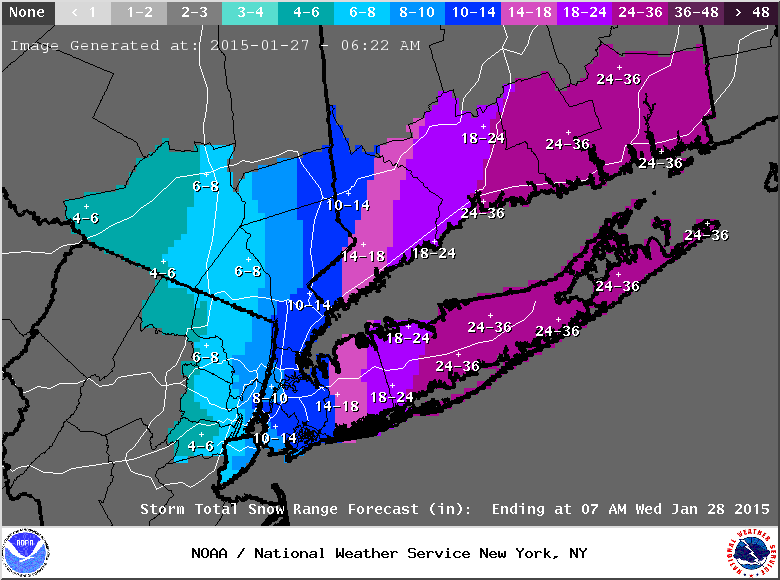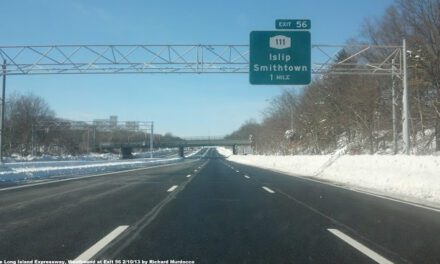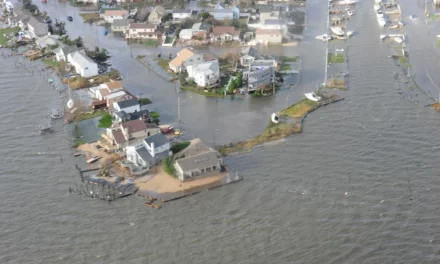The following was written for Long Island Business News.
The Nor’easter churning up the Atlantic Coast had the Tri-State region on edge since Friday. New York’s Governor Cuomo enacted a travel ban spanning 13 downstate counties across New York. The LIRR and Metro North began to wind down operations before shutting down at 11 PM, and in an unprecedented move, the subway even stopped running then as well.
On the morning of Tuesday January 27, New Yorkers awoke to find themselves in a quiet city that, after much speculation and hype of a blizzard of historical proportions, had little snow cover. The storm was going to be an epic event. Manhattan was spared the worst, and New Yorkers were quick to criticize the forecasts and actions of government. They expressed their frustration with the National Weather Service on Facebook and Twitter, becoming apparent armchair experts in the subject of meteorology and art of forecasting.
After waking up on Tuesday, to many New Yorkers it seemed that the storm was a big bust. …except that it wasn’t. The Blizzard of 2015 was, for some areas, as epic as forecasted, if not more.
The National Weather Service, along with the governments that heeded their warning to take this storm seriously, were right to do so.
Immediately east of the City, Long Island’s Suffolk County and the five East End townships of Riverhead, East Hampton, Southampton, Shelter Island and Southold bore the full brunt and fury of the storm. With totals nearing two feet plus, paired with fierce winds and accelerated coastal erosion, those in Midtown Manhattan claiming “bust” would find themselves in the middle of a maelstrom of white if they drove about an hour east on Long Island.
As the New York Times put it, “parts of eastern Nassau County, on Long Island, for example, got as much as 18 inches, while parts of New York City received only four.” According to forecasters, a difference of 30-miles was all it took to differentiate between a dusting and blizzard conditions. That is roughly the distance from Times Square to Hicksville. Levittown had 18” dumped on it, while Southampton had 28”. Often, Long Islanders forget just how long the Island truly is, and how the weather in Oceanside can be radically different from that in Setauket.
Image Courtesy of the National Weather Service in Upton, NY. Follow them on Twitter @NWSNewYorkNY and Like their Facebook page for helpful updates.
Government was right to shut down the subways, cease transit operations and enact travel bans. Due to the empty roads, the region was able to bounce back from the storm rapidly, allowing a quicker rebound from the blizzard. In an age of extreme weather events, government can’t take unnecessary risks because it’s inconvenient. The call to act as they did was driven by data, and the data was the best available at the time – it’s better to say they were too cautious as opposed to not cautious enough after underestimating a storm.
The Washington Post wrote an excellent piece entitled “The ‘Historic’ Blizzard Missed New York City, Therefore It Didn’t Happen” which looked in tongue-in-cheek detail on what those pouty city dwellers were saying, and kindly reminded them that “most of that snow that missed New York and the Parts of Connecticut That New Yorkers Care About still fell to the ground, deeper into New England.”
Overall, the Blizzard of 2015 was a relative experience. You either got slammed, or you enjoyed the benefit of a completely plowed LIE thanks to the travel ban preventing wayward cars from becoming stranded.
In our age of technology, we live in an “On-Demand” world. We expect things when we want them, and how we want them. When it comes to the weather, Mother Nature is still in control…even in New York.













